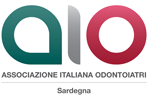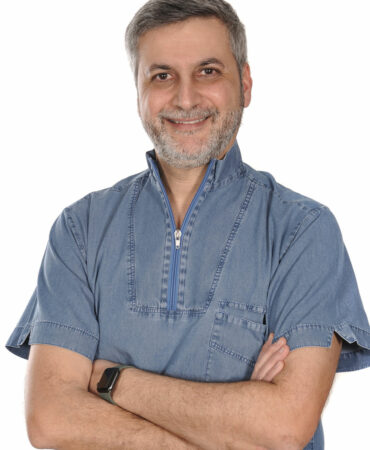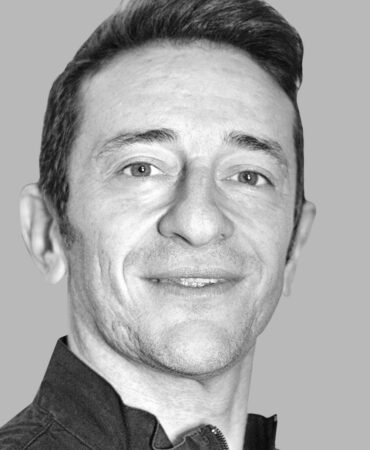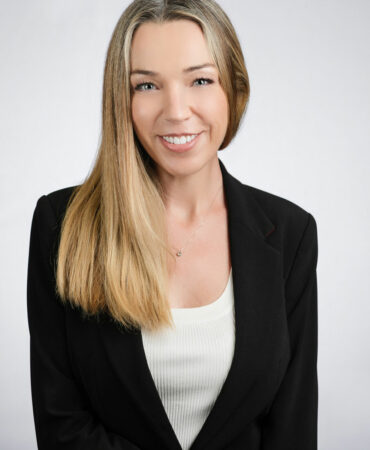Endodontic Session
8 Ada cerp/PACE credits
9.00 - 9.45 | Endodontic Microsurgery: Mastering Challenges and Redefining Our Limits!
Various factors make endodontic microsurgery an essential complementary treatment for the healing of periradicular infections, thereby extending the lifespan of natural teeth and significantly enhancing patients’ quality of life. This approach often presents significant challenges for clinicians. However, with meticulous planning, these challenges can be effectively managed, reducing risks and increasing the success rates of tooth survival procedures. This lecture will explore the latest methods available to overcome the diverse clinical challenges encountered in endodontic microsurgery.
9.45 - 10.30 | HEAT TREATED ALLOYS OVS TRADITIONAL ALLOYS: What is the best choice in daily practice
The necrotic tooth with “Open apex” is a condition which represents a treatment challenge in endodontics. It is a clinical situation which may be the consequence of: 1) trauma which has caused the interruption of the development of the pulpal-dentinal complex in immature teeth; 2) trauma which leaves the teeth in an immature stage, but is discovered in the adult age; 3) complex anatomies such as “dens in dente” 4) Resorptive defects that create irregularly opened apices. Current treatment options and techniques include traditional apexification, MTA apexification, and the latest trends that are represented by the so-called regenerative/reparative procedures.
The different options will be discussed in the background of clinical experience and literature.
Learning Objectives
- At conclusion participants should be able to consider “classic apexification” as a good and predictable treatment standard and the best up to date protocols to use it
- At conclusion participants should be able to recognize the use of “MTA/bioactive cements pre-formed apical barrier” as an alternative treatment which is becoming more predictable after 15 years of clinical experience, and the best protocols on how to use it
- At conclusion participants should be able to apply open apex treatment to resorbed teeth
- At conclusion participants should be able mix the available techniques to apply them to unusual clinical situations
- At conclusion participants should be able to consider the possibility to attempt “ regenerative procedures” in immature teeth
AL ALLOYS: What is the best choice in daily practice.
Root canal shaping has always been one of the fundamental moments of endodontic therapy, for years the use of nickel titanium rotary instruments has enormously facilitated this phase and the continuous updating of the alloys has partly modified the methods of use of the instruments themselves. The report will analyze all the clinical aspects that guide us in the choice of instruments according to the different anatomical situations to be faced.
10.30 - 11.00 | Do you know how to manage a root resorption?
Lesions are the result of the evolution of an Apical Periodontitis and are due to a bacterial proliferation. But when a large periapical lesion is diagnosed on the X-ray, most of the time, the first idea is to ask how to remove it and then who will be able to do it surgically: the practitioner, the oral surgeon or possibly the endodontist.
In fact, faced with this situation, the first step is a precise diagnosis to determine the origin of the lesion and ensure that it is a lesion of endodontic origin, in order to avoid treating endodontically vital teeth or performing unnecessary surgery.
Different tests will be necessary (vitality tests, CBCT, and clinical examination) and the analysis of the results and their comparison with the patient’s perception will allow us to make this diagnosis and to determine our therapeutic choice between an endodontic or surgical treatment or both.
Throughout this presentation, our experiment, as a clinician, will allow the participants through many clinical cases, to learn to diagnose and treat large periapical lesions.
Root resorption is a pathological process involving the destruction of tooth root structures, often triggered by trauma, orthodontic forces, or inflammation. This condition poses significant challenges in diagnosis and treatment due to its complex and variable nature. Recent advancements, particularly in imaging technologies like cone-beam computed tomography (CBCT), have enhanced early detection and assessment of root resorption. A deeper understanding of the differential diagnosis between all the types of root resorption is paving the way for more effective, individualized management strategies. Further research is necessary to refine these approaches and improve patient outcomes.
11.00 - 11.30 | Break
11.30 - 12.00 | Digital endodontics: when, how and why
Digital endodontics represents the integration of advanced digital technologies into endodontic practice, significantly enhancing diagnosis, treatment planning, and procedural accuracy.
Digital endodontics represents a significant advancement in the field, offering greater precision, improved outcomes, and enhanced patient care.
Implementing these technologies requires an investment in training and equipment but can significantly benefit both practitioners and patients.
By integrating digital tools and workflows, practitioners can provide higher quality care, improve efficiency, and stay at the forefront of dental technology.
12.00 - 12.30 | Innovative Endodontics using SWEEPS: science, technology and clinical practice
There has been a volcanic eruption of technologies in Endodontics over the past 20 years. The development of NiTi shaping files, the debut of biocompatible materials, the advent of CBCT for improved diagnostics. These minimally invasive technologies promote the maximum preservation of tooth structure, but according to an old aphorism enunciated by Herbert Schilder, for the success of endodontic therapy, “what is removed” is more important than “what is introduced” into the canal system. In this view, laser activated irrigation, and more specifically SWEEPS technology represents a breakthrough method for 3D disinfecting of the root canal system. This unique irrigation method produces fluid cavitation in the root canal system as result of photoacoustic phenomenum generated by erbium YAG laser ultra-short dual pulses energy delivered by the tip kept stationary in the access cavity of the tooth. In this way, the use of EDTA and NaOCl, along the correct protocol, improve the cleaning and decontaminating effect of root canals when compared to conventional methods. The SWEEPS protocol is validated by several in vitro studies, supported by a strong body of published and non-published experiments and data, and confirmed by thousands of clinical trials.
Learning Objectives
- to understand the main importance of endodontic irrigation in Endodontics
- to understand the difference among sonic, ultrasonic, multisonic and laser activated irrigation
- to know the main advantages of SWEEPS technology for root canal irrigation
- to be aware of the efficacy and effectivenes of LAI/SWEEPS technique in all the steps of R.C.T.
Theoretical Part of the Practical Course in the Afternoon
12.30 - 13.00 | The use of latest generation bioceramic materials in orthograde and surgical endodontics
The so-called “bioceramic” materials were an evolution of the Mineral Trioxide Aggregate which now three decades ago revolutionized the management of some complex clinical problems which until its introduction had a poor prognosis such as perforations, bleeding apices and surgical repairs of hard tissue defects . The main limitation of MTA, which is mainly made up of calcium silicates, was its consistency and the difficulty of application which limited its possibilities of use, especially as a cement in orthograde endodontics. The evolution of materials based on biocompatible and bioactive calcium silicates has made it possible to improve the physical and smoothness properties, producing it in different typologies from putty to fluid cement with different indications and characteristics of use. Scientific evidence demonstrates that these materials, in addition to being well tolerated by the periapical tissues, also have antibacterial activity and an effective seal and adhesion to the canal walls. In this course, the differences between the different materials that the market makes available to us will be analyzed and their methods of use in different clinical situations will be illustrated.
TOPIC
- The history of bioceramic materials
- Chemical-physical characteristics of bioceramic materials
- The fields of use of bioceramics
- The advantages of clinical use
- Step by step procedures
- Cold single cone technique root canal obturation: indications and step by step
- Canal obturation with hot technique (Mild warm approach): indications and step by step
- Endodontic post cementation: how to carry it out in the same session as the endodontic seal.
- Reprocessing of bioceramic cements
- Endodontic surgery: the bioceramic putty retrograde seal
- Management of perforations with putty bioceramic materials
- Simplified method of closing the open apex (Apical plug)
- Presentation of clinical cases
13.00 - 13.30 | Mastering the obturation in Endodontics: Warm Gutta Percha or Cold Gutta Percha with Bioceramic sealer? Why not both?
Bioceramic Sealers no secret: tips to get a proper outcome patient-centered obturation using bioceramis sealers
The deep knowledge of the characteristics of the bioceramic sealer is mandatory to make the clinician to use the material with confidence. Aim of the lecture is to analyze all the features of the sealer to understand how to use it properly in order to get in the clinical practice all the benefits of this sealer.
Many clinicians are reluctant to use the bioceramic sealer because they are plenty of doubts arising from a lack of knowledge of the material, on the other hand a lot of clinician are overconfident with the bioceramic sealer, thinking that can be used in all the situations. The bioceramic sealer has not magic properties and has to be used properly.
During the lecture will be discussed even some interesting point regarding the bioceramic sealer, as the retreatability, the possibility to be used with warm techniques, the possibility to replace MTA in selected cases. and the impact on the outcome of therapy even in case of overfilling.
Many clinical cases will be shown during the lecture and even data on outcome of teeth with periapical lesions.
At the end of the lecture the participant will have a complete knowledge of features and potential of the CeraSeal, understanding the big value in term of ergonomics in the clinical practice and recognizing that the cold hydraulic condensation is a valid technique even in presence of big apices or small perforations.
TOPIC:
- Role of obturation on the outcome of the treatment
- Features of bioceramic sealers
- Ergonomics and Cold Hydraulic Condensation technique
- Steps of Cold Hydraulic Condensation with CeraSeal
- Overfilling control using bioceramic sealer
- Outcome of teeth with lesions using CHC and CeraSeal
- Management of big apices and small perforation using CeraSeal
HANDS-ON COURSE PROGRAM

Contacts – Privacy e cookies policy
© 2024- AIO Cagliari Oristano – Via San Giovanni 97 – 09100 Cagliari – Partita IVA 03675540920
Webmaster by Mobilbyte









